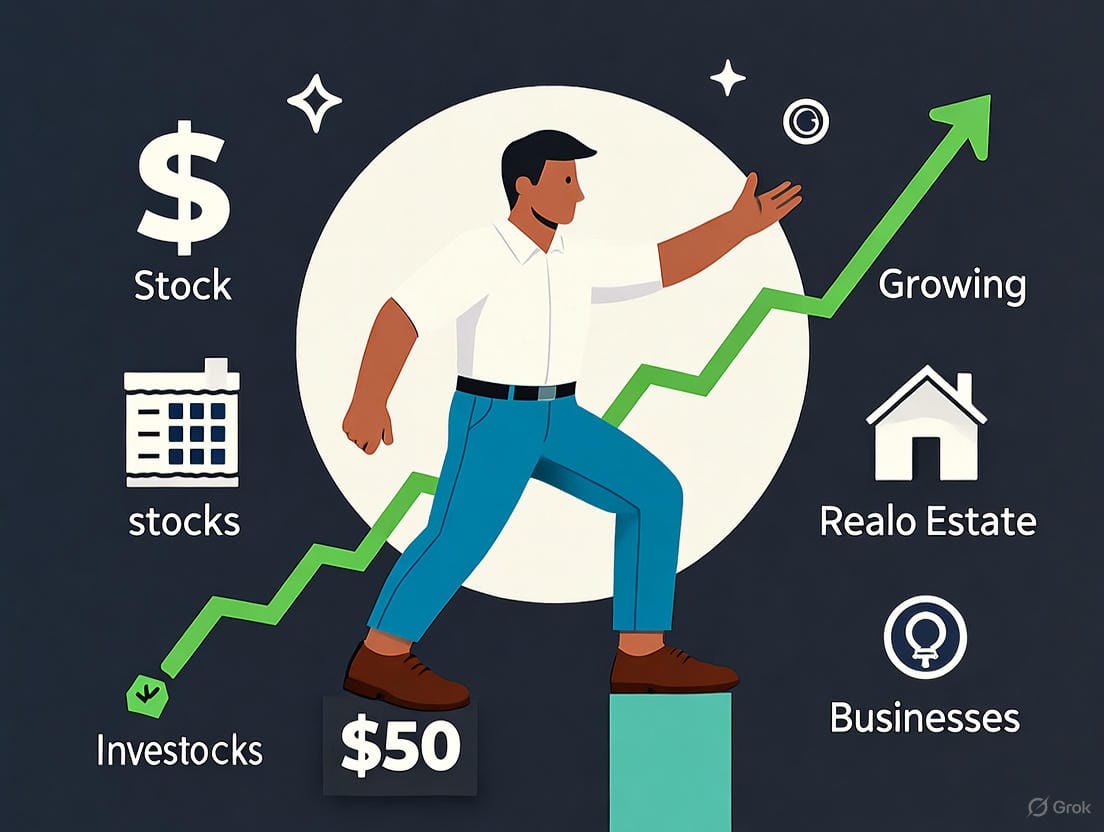Overcoming the Fear of Investing
Start small with an investment you can afford to lose, like $50 in a stock, to build confidence and learn the art of wealth-building through assets, not cash.

Investing can feel like stepping into the unknown, especially for beginners paralyzed by the fear of losing money. Many hesitate, waiting for the "perfect" moment that never seems to arrive. This fear is understandable but often rooted in misconceptions about wealth and money. Hollywood movies glorify stacks of cash, luxurious lifestyles, and instant riches, leading many to believe that hoarding cash is the path to wealth. The truth, however, is far different—and far more empowering.
The Wealthy Don’t Chase Cash—They Build Assets
Contrary to cinematic fantasies, wealthy individuals don’t keep their money in cash-stuffed suitcases. Cash loses value over time due to inflation, eroding purchasing power. Instead, the wealthy invest in assets—stocks, real estate, businesses,commodities—that appreciate in value and generate returns. These returns, not their raw earnings, fund luxury purchases or further investments. The lesson? If you want to build lasting wealth, focus on acquiring assets and adopt a long-term perspective. The money will never be enough. What matters is the life that you build with it and the people that you share it with.
Breaking the Fear Barrier
The biggest hurdle for new investors is taking that first step. The fear of loss can be overwhelming, but there’s a simple way to overcome it: start small. Ask yourself, “How much can I afford to invest without being emotionally or financially devastated if the value drops?” For many, this could be as little as $50 in a stock. A small, intentional investment flips the script—it’s not about risking everything but about learning and building confidence.
Here’s why starting small works:
- Low Emotional Risk: If you invest $50 in a stock and it drops, the loss won’t derail your life. You’re less likely to panic, allowing you to focus on learning rather than stressing.
- Encouraging Gains: If the stock rises, even modest gains can boost your confidence, reinforcing that investing is a viable path to wealth.
- Learning by Doing: A small investment encourages you to research and monitor the asset closely. You’ll gain insights into market behavior, company performance, and economic trends without the pressure of high stakes.
- Building a Habit: Small, periodic investments—say, $50 a month—create a routine. Over time, this consistency compounds, both in knowledge and wealth.
Investor vs. Trader
It’s critical to approach investing with a long-term mindset. Investing is a lifelong journey, not a get-rich-quick scheme. Short-term trading, where you buy and sell assets rapidly, requires different skills, time, and emotional discipline. As a beginner, focus on being an investor. Choose assets with strong fundamentals, like established companies or diversified funds, and hold them for years. This approach minimizes stress and aligns with wealth-building principles.
Diversify and Grow with Confidence
Once you’ve gained confidence through small investments, the next step is diversification. Spread your investments across different asset classes—stocks, real estate, or even bonds. Each small step builds your knowledge and resilience, turning investing from a daunting task into an exciting opportunity.
The Path Forward
The key to overcoming the fear of investing is to reframe it as a learning process. Start with an amount you’re comfortable with, research your choices, and commit to a long-term perspective. Over the years, your confidence will grow alongside your portfolio. Wealth isn’t built overnight, but through consistent, informed decisions, you can turn small steps into a legacy of financial security.
So, what’s stopping you? Invest that first $50, watch, learn, and take control of your financial future. The journey to wealth begins with a single, fearless step.





